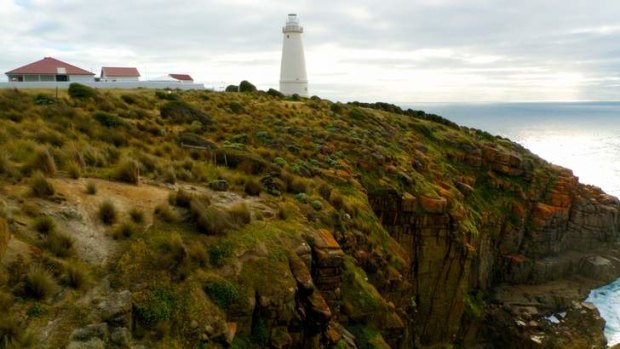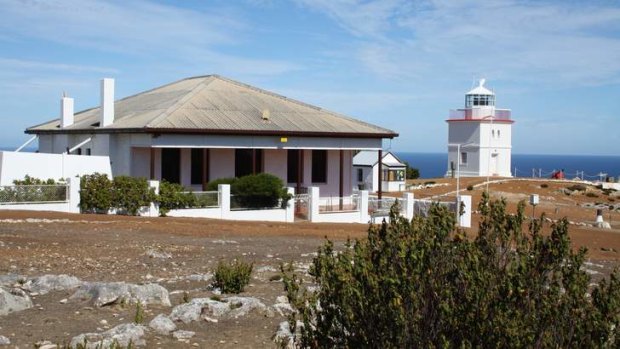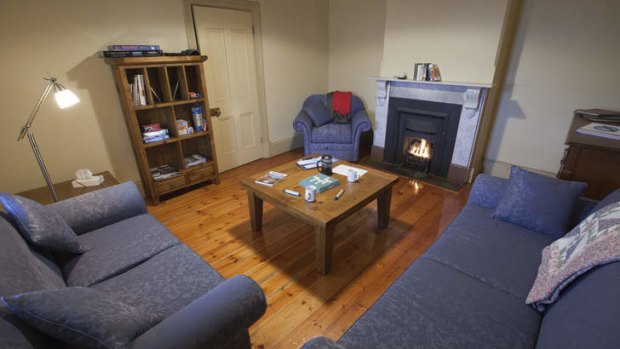
Beam there: Cape Willoughby lighthouse.Credit: Elspeth Callender
Elspeth Callender tours a trio of remote, windswept towers whose lights saved lives.
Nosing out into the Southern Ocean like a little fish that's getting away, South Australia's Kangaroo Island has, for many decades, been the location for landmark lighthouses and their faithful keepers. People have lived, worked and sometimes died at these tiny isolated settlements in their efforts to keep the beam alive, but automation has now rendered the old keepers' cottages vacant.
Today it's possible to take a road trip and stay at a trio of the island's light stations to gain a sense of what life must have been like in the heyday of these beacons.

The station at Cape Borda.
From the car ferry terminal at Penneshaw, Kangaroo Island's main settlement, I follow the coast road towards Cape Du Couedic, which is down in the far-flung south-west corner of this wide, deceptively large island. The final section is twisting as the island peters off into a rocky headland where wild-flowered banks decorate the ocean shores and fat, shiny fur-seals recline on sun-warmed rocks.
South Australia's 15th lighthouse was commissioned for Cape Du Couedic after 76 people died nearby in three separate shipwrecks. Its 25-metre conical light tower was built between 1906 and 1909 using, legend has it, exactly 2000 pieces of local stone.
For decades afterwards, Cape Du Couedic lighthouse and the three limestone keepers' cottages were inaccessible by land; stores were delivered by sea every three months. Initially everything had to be carried up a path cut into the 92-metre cliff face.

A lighthouse keeper's cottage at Cape Du Couedic.
Later, a flying fox ran between a jetty and the cliff top, powered first by horses then by motorised winch. A story goes that a particularly unlikeable wife of a lighthouse keeper once got stuck in the basket halfway when the motor malfunctioned.
Cape Borda lighthouse, opened in 1858, is my next day's destination. The oldest remaining square stone lighthouse in South Australia, it is at the far-western, unsealed end of Playford Highway. In the 1920s, this route was so rough and boggy that it took days and days to travel the 104 kilometres from Borda to the island's main port town of Kingscote, even in a double-rear-axle-driven truck.
Such isolation left lightstation residents at far greater risk of death when illness struck or accidents occurred. One of Borda's first keepers, Captain Woodward, died on September 13, 1858 - only months after taking up the job. He had tripped over a tree stump and pierced his eye. His fellow keepers had to make a coffin, conduct a service and bury him. Some weeks later a passing ship read a sign on shore that said: "in want of hands".
Cape Borda's light was initially powered by pressurised kerosene with a mantle. The fuel had to be constantly pumped by hand and the mantle rapidly replaced when necessary. The cleaning and trimming of lamps was so labour intensive that keepers worked four-hourly shifts.
In 1932, this apparatus was replaced and two diesel engines were used to power the light. If one failed it would switch on the other and, at the same time, an alarm would ring in the house. As one keeper said: "Those two old bangers were foolproof, keep the fuel clean and no worries." Guided tours are offered at Borda and a cannon is fired daily at 12.30pm.
It seems ironic, but with lighthouses come shipwrecks. From 1847 there have been more than 80 around Kangaroo Island, the largest being a 5865-tonne Japanese freighter, Portland Maru, lost in 1935 near Cape du Couedic. In 1877, a 129-tonne brigantine, Emily Smith, was driven off course by rough weather and forced ashore on the west coast where it broke up. Only five of the 39 passengers and crew made it to land and three of those survived by reaching Cape Borda lightstation; the other two were never seen again.
The following day I drive back across the island towards Cape Willoughby lighthouse, a limestone and granite tower originally lit using multiple wick burners in a clockwork mechanism Deville lantern. Back then, keepers' quarters were close to the beach near fresh water (there's still a well there for stock). On a self-guided hike from the Cape Willoughby visitor centre I imagine this commute during midwinter in bad weather at night. In 1927, housing was built nearer to the lighthouse and automation came in 1974.
From the many rooms in Seymour Cottage, I take one off the kitchen to where sickly children may have been confined and brought hot broth and cold washcloths. From under my covers I listen to the wind howl across yet another exposed headland and imagine living here with just a few families and no vehicles, no phone, no painkillers, no refrigeration. Just a few metres away, South Australia's first lighthouse projects intermittent beams across Backstairs Passage to the mainland, as it's done for 161 years
The writer travelled as a guest of the South Australian Tourism Commission.
TRIP NOTES
GETTING THERE
Qantas operates regular flights between Sydney and Melbourne and Adelaide. Phone 131 313 qantas.com.au. Regional Express airline (rex.com.au) flies nonstop from Adelaide to Kingscote. If travelling by car, Sealink ferries run several times a day between Cape Jervis and Penneshaw. Bookings essential. Phone 131 301, or see sealink.com.au.
STAYING THERE
Lighthouse accommodation on Kangaroo Island is managed by South Australia's parks and wildlife service. Lighthouse cottages start from $170. Phone 08 8553 4410 or see environment.sa.gov.au/parks.
SEE + DO
There are guided tours of the limestone caverns of Kelly Hill Caves as well as walks such as the 1.9 kilometre Cape Willoughby Lightstation heritage hike at sunrise, and a guided nocturnal walk at Hanson Bay Wildlife Sanctuary. Watch for wildlife in the waterholes on Platypus Waterholes Walk, Flinders Chase NP. See hansonbay.com.au.
EATING THERE
Near Cape du Couedic, try Flinders Chase Cafe, at the national park visitor centre. Close to Cape Wiloughby, try Chapman River Winery. For Kangaroo Island, see goodfoodkangarooisland.com.
MORE INFORMATION
Sign up for the Traveller Deals newsletter
Get exclusive travel deals delivered straight to your inbox. Sign up now.